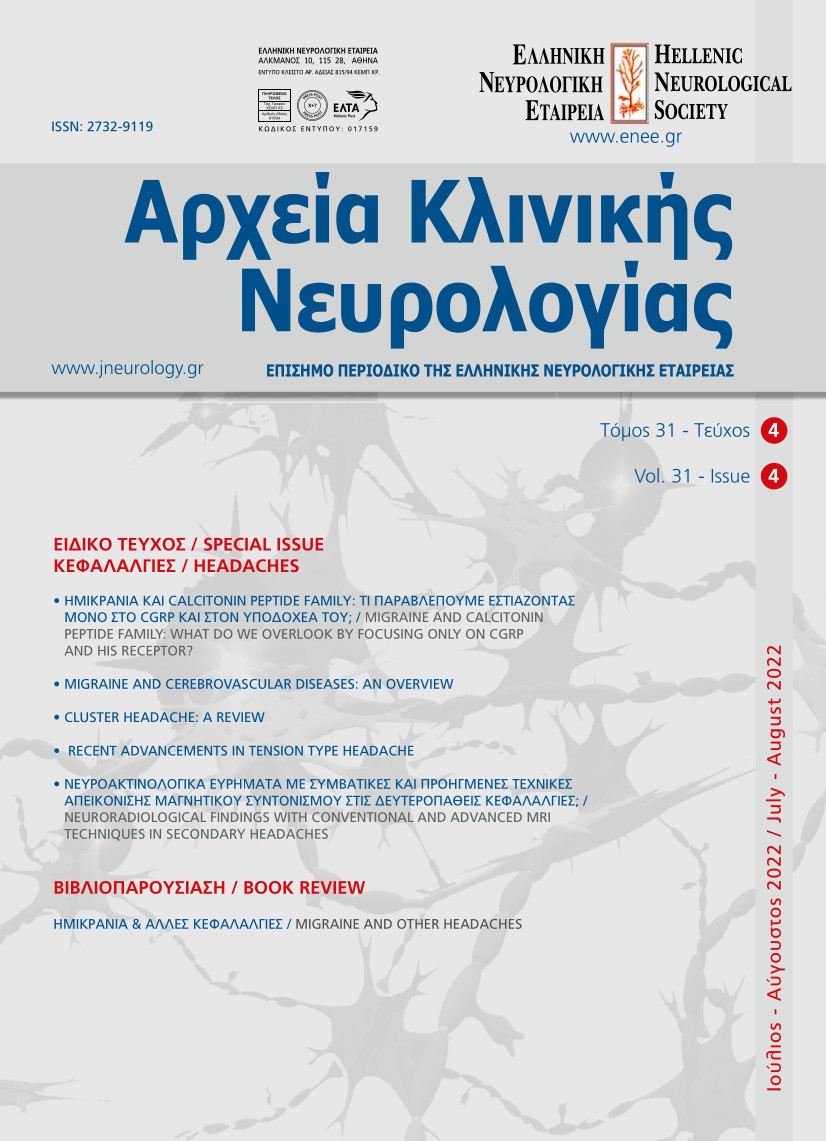ΝEURORADIOLOGICAL FINDINGS WITH CONVENTIONAL AND ADVANCED MRI TECHNIQUES IN SECONDARY HEADACHES
Keywords:
Magnetic Resonance Imaging, MRI, secondary headache, advanced MRI techniques, neuroradiologyAbstract
Headache is one of the most common clinical entities that neurologists are confronted with in clinical
practice and is associated with a wide spectrum of differential diagnoses. The International Classification
of Headache Disorders, 3rd edition (ICHD-III) classifies headache in two main categories: primary headache
in the absence of underlying disorder and secondary headache which is attributed to underlying systemic
or neurological disease. The classification of headache warrants a detailed patient history and clinical
examination, as well as complementary neuroradiological studies, especially when “red flags” point towards
secondary headache types that may require therapeutic interventions. The main causes of secondary
headache include infections, neuroinflammatory disorders, brain neoplasms, cerebrovascular diseases, and
alterations of cerebrospinal fluid (CSF) dynamics. Computed Tomography (CT) studies are primarily used
for the acute differential diagnosis of headache, for example in patients presenting with “thunderclapheadache”
when subarachnoid haemorrhage is suspected. In the sub-acute setting, however, Magnetic
Resonance imaging (MRI) studies are far more sensitive for the delineation of underlying brain pathologies.
Besides the use of conventional MRI, advanced MRI techniques, including diffusion imaging, perfusion,
spectroscopy and functional MRI, facilitate the early diagnosis of underlying functional, structural, and
metabolic changes, while they may be also utilized for treatment monitoring in patients with secondary
headaches. In the present review, the most commonly encountered secondary headaches along with associated
neuroradiological findings will be presented, focusing on conventional and advanced MRI techniques.


